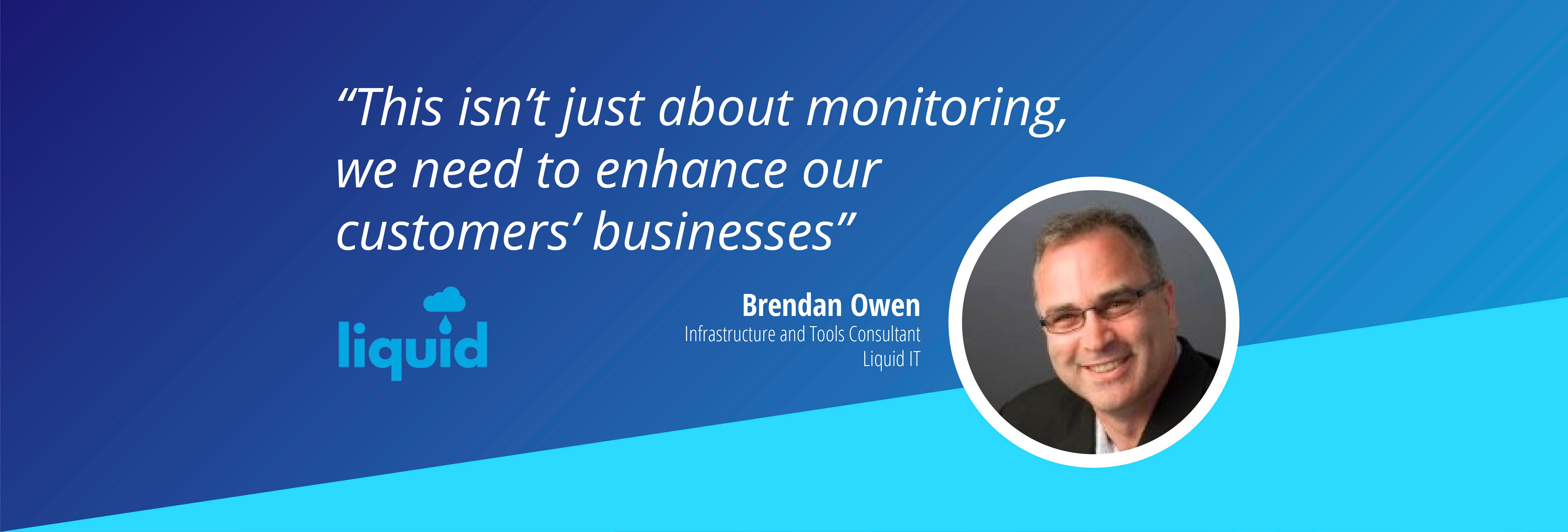Liquid IT is a New Zealand IT services company that delivers cybersecurity, network connectivity and integrated workspace services to government and corporate clients in New Zealand. The firm manages a hybrid IT environment for its customers that includes Microsoft Azure cloud services, Cisco Meraki cloud network services, plus on-premises compute, storage and networking from the likes of VMware, Dell EMC, Nutanix, AeroHive and Palo Alto Networks.
Liquid IT needed a unified platform to monitor and manage this environment as the complexities of its hybrid infrastructure outpaced the capabilities of its previous IT monitoring vendor and various other point tools it was using. It found the right fit in OpsRamp’s Digital Operations Management platform.
Customer Challenges
Liquid IT faced a number of challenges common with teams looking to modernize their IT operations. It had multiple monitoring tools across hybrid infrastructure, physical and virtual servers and storage, applications and databases, but no correlation of alarms across those tools. That left its team struggling with alert overload, including a high rate of false alarms. Meanwhile its monitoring tools didn’t cover all of its infrastructure effectively, which made root cause identification a challenge. For example, while the previous platform ingested event data from Liquid IT’s Cisco Meraki cloud networking services, it failed to provide any performance metrics from this data. This required Liquid IT staff to navigate through multiple screens to identify and diagnose performance issues once they arose. The platform also provided limited dashboard capabilities and didn’t offer role-based access control (RBAC), a necessity for managing network and cloud service access to employees.
“We noticed a bit of sprawl in monitoring, management and ITSM,” said Brendan Owen, tools architect at Liquid IT. “People were bringing on new things quicker than we could integrate them. We had to consolidate those tools and have a strategy about where we were going in the future.”
People were bringing on new things quicker than we could integrate them. We had to consolidate those tools and have a strategy about where we were going in the future.”
- Brendan Owen
Customer Objectives
Liquid IT had four objectives as it sought a modern IT infrastructure management platform that could keep up with its customers’ hybrid infrastructure needs.
- The primary objective was integrated visibility, monitoring and alert management across the entire IT landscape with a single platform for simplifying monitoring and management of this hybrid environment.
- Secondary objectives included AIOps-based event correlation and alert suppression for reducing alert noise and fatigue; role-based alert escalation for faster mean time to resolution (MTTR); and automated patch management.
- Liquid IT also required a multi-tenant solution with role-based dashboards and reporting for improving real-time visibility of business service performance.
- Finally, the Liquid IT team wanted to be self-sufficient in ongoing maintenance and operations of the platform it chose.
“Single pane of glass is not a term I like, but we needed to get to the position where we at least had a starting point of where to look,” said Owen. “Then you move on for more diagnostics.”
The Solution
Liquid IT turned to OpsRamp for hybrid IT infrastructure and event management. This included discovery of on-premises and cloud resources; monitoring of hybrid infrastructure and workloads; visualization of IT assets and resources and service maps from a unified console; native event management, including AI/ML-based event correlation, enforcement of first-response policies and automated alert escalation; and integrations with Microsoft Azure Active Directory, Freshservice IT service desk and Logz.io.
OpsRamp’s multi-tenant, multi-tiered architecture allowed Liquid IT to monitor not just its own instances, but its customer instances, providing role-based access control and dashboards.
“Customers love the dashboards, they’re getting visibility for the first time of services they have procured, and are consuming real-time information about their operations, not just getting a summary report every month,” Owen said.
Liquid IT is using OpsRamp to monitor nearly 2400 assets across cloud and non-cloud infrastructure, including Cisco Meraki, VMware, Microsoft Azure and Amazon Web Services.
Single pane of glass is not a term I like, but we needed to get to the position where we at least had a starting point of where to look"
- Brendan Owen
The Benefits
One of the first benefits Liquid IT noticed came from OpsRamp’s dedupe key feature. This allowed Liquid IT to compare new events with open alerts and eliminate duplicate events already covered by previous alerts. Liquid IT was able to reduce alerts by more than 63% just by eliminating these duplicate events. OpsRamp’s alert correlation and suppression capabilities reduced alerts by an additional 85%.
“Out of the box, dedupe and alert correlation reduced our alert noise,” Owen said. “We’re working to make it even better.”
Overall, Liquid IT rated OpsRamp’s AIOps capabilities as more than 95% effective at reducing alerts. This resulted in reduction of mean time to detect and resolve and an increase in service availability.
Liquid IT also used OpsRamp’s patch management capabilities to maintain a complete, accurate picture of configurations across their entire IT infrastructure and build standardized configuration and patch management processes to mitigate risk, improve efficiency, and drive business agility.
OpsRamp helped Liquid IT to get to the bottom of its root cause analysis issues. One Liquid IT customer was having persistent problems with slow application performance. The tools Liquid IT had been using, including AWS and Cisco’s own monitoring tools, showed conflicting results and Liquid IT couldn’t find the root cause of the problem. After deploying mobile OpsRamp Gateways and running performance tests with OpsRamp Synthetic Monitoring and Infrastructure Monitoring, Liquid IT was able to finally determine the root cause of the slow performance: network packet loss through the ISP’s firewall. The company soon discovered that many of their customers had the same issues with their ISPs. They were able to equip customers with the data they needed to demand that their ISPs live up to their service level agreements. Many of those customers are now expanding their use of Liquid IT’s managed services.
“This isn’t just about monitoring, we need to enhance our customers’ businesses,” said Owen.
Next Steps:
- Read the Blog: Ten Reasons Why MSPs Choose OpsRamp for Hybrid IT Operations Management
- Read the Blog: Five Key Capabilities You Need to Deliver Modern Managed Services
- Read the Blog: New Mandates for Managed Service Providers
- Schedule a custom demo with an OpsRamp solution expert.






